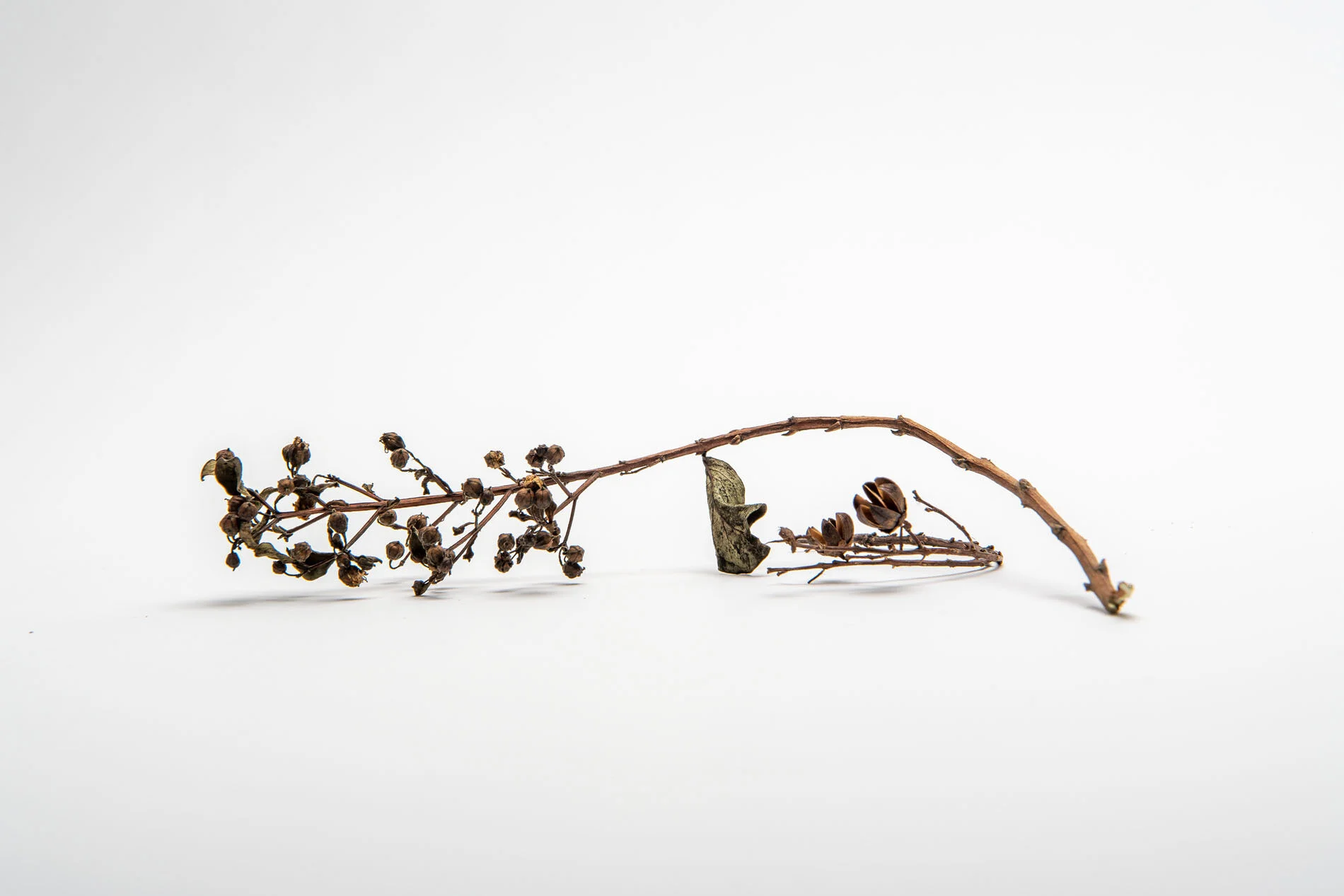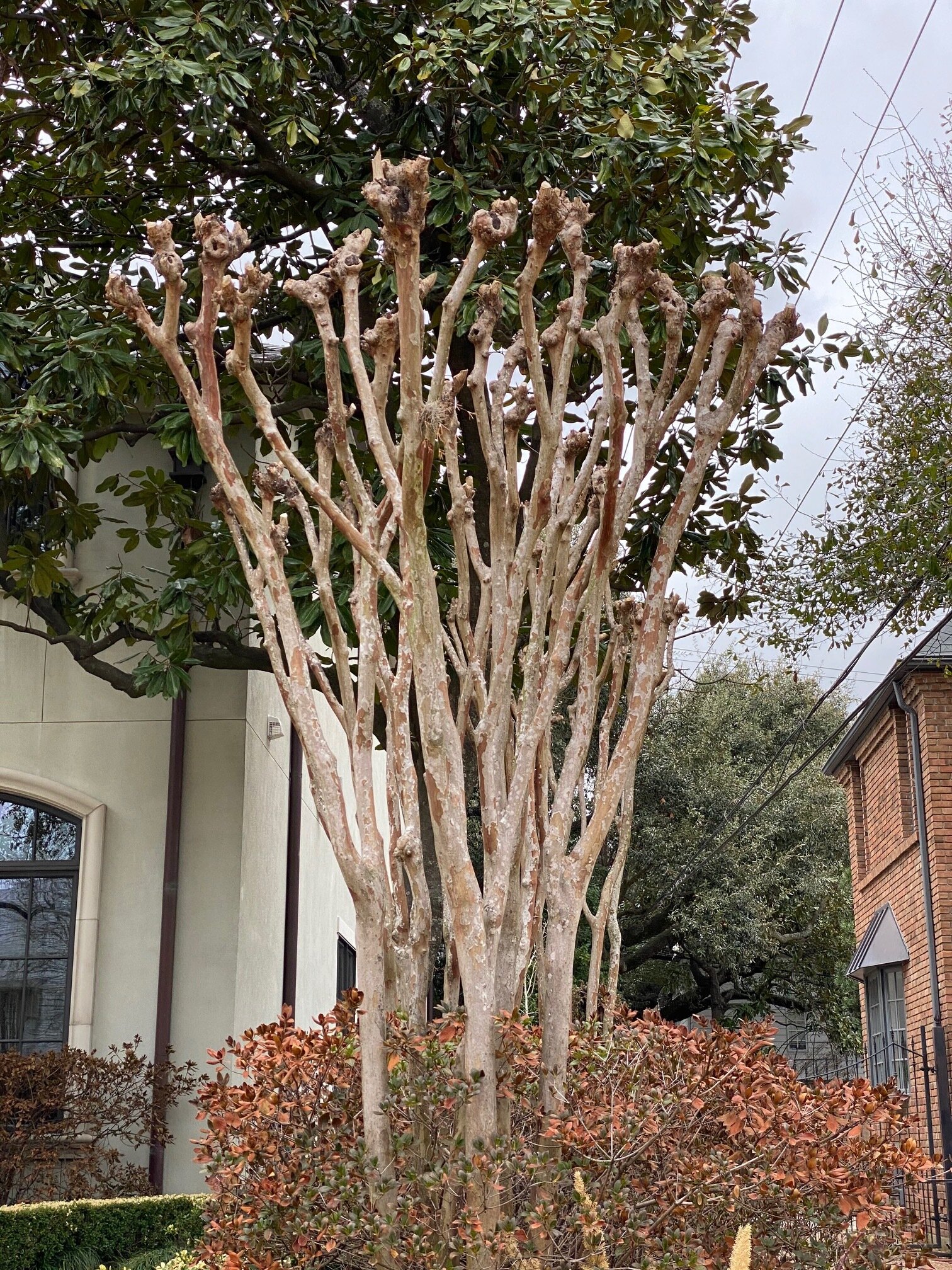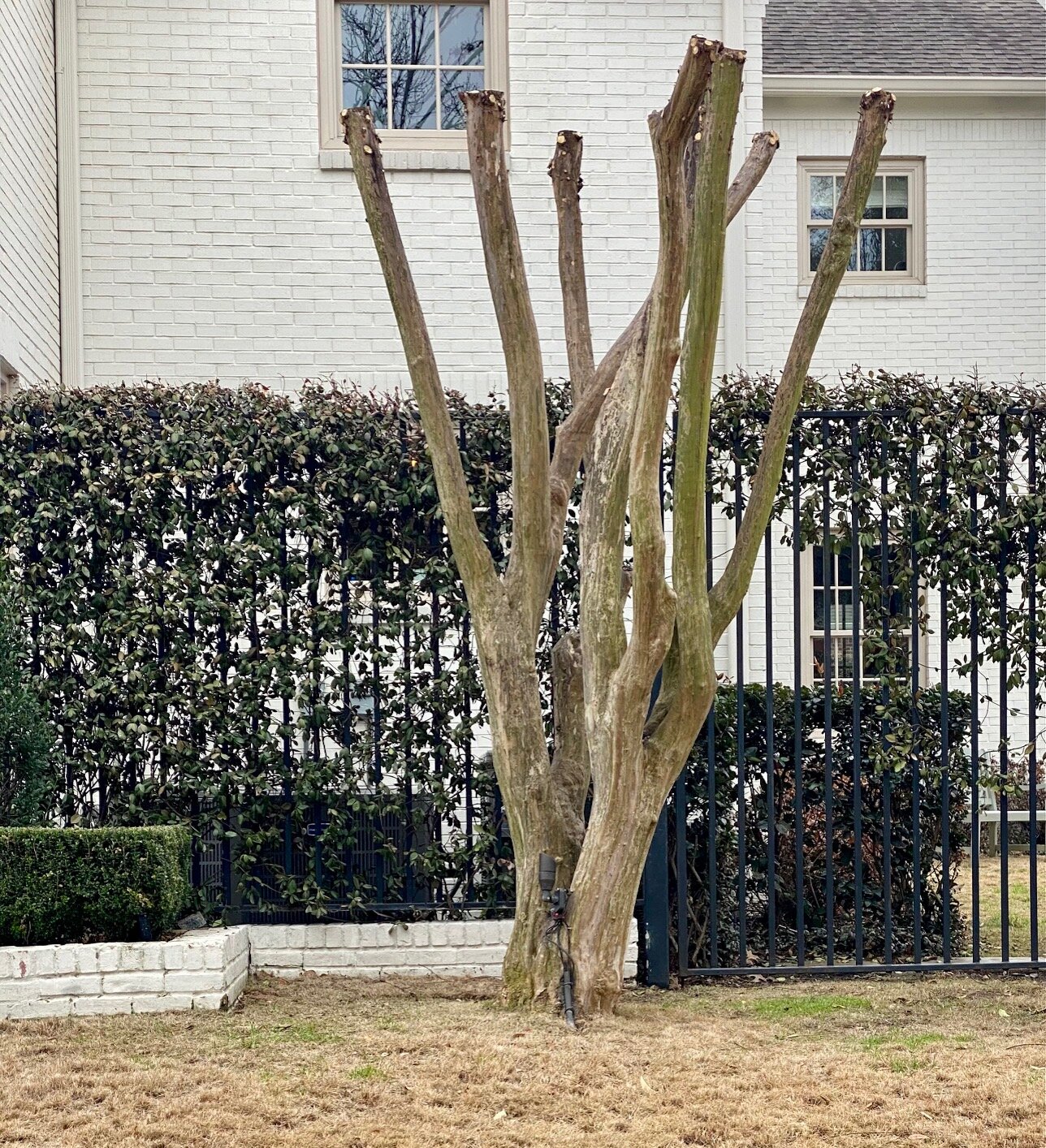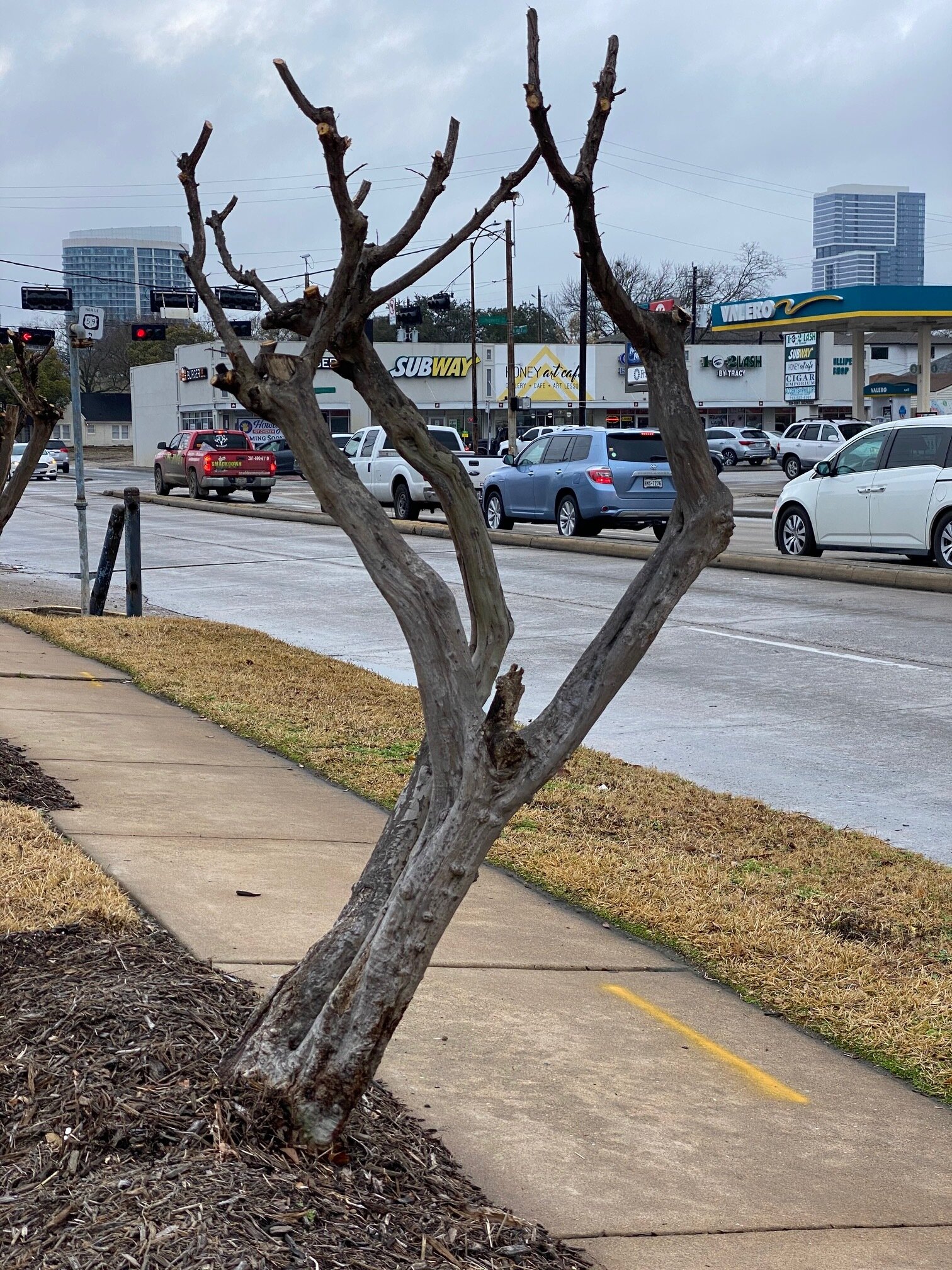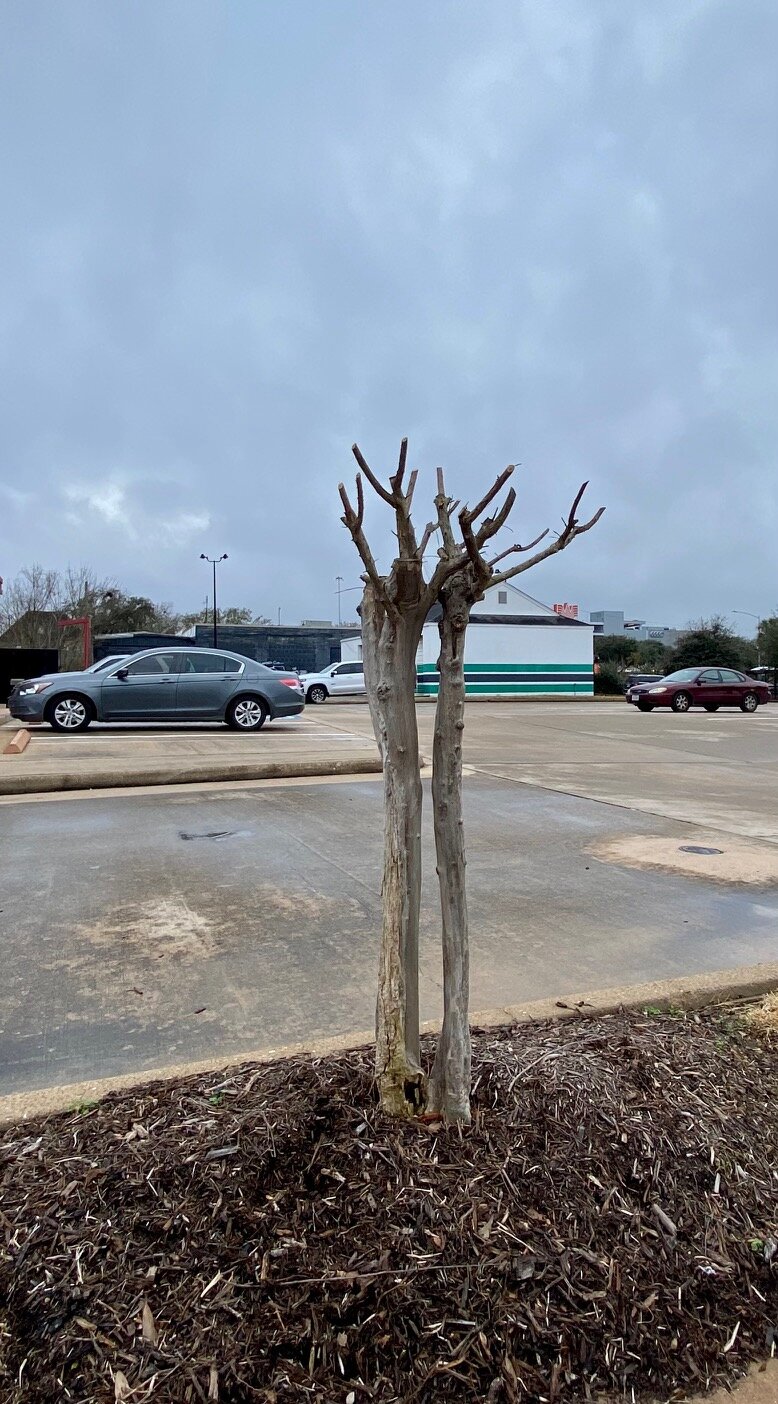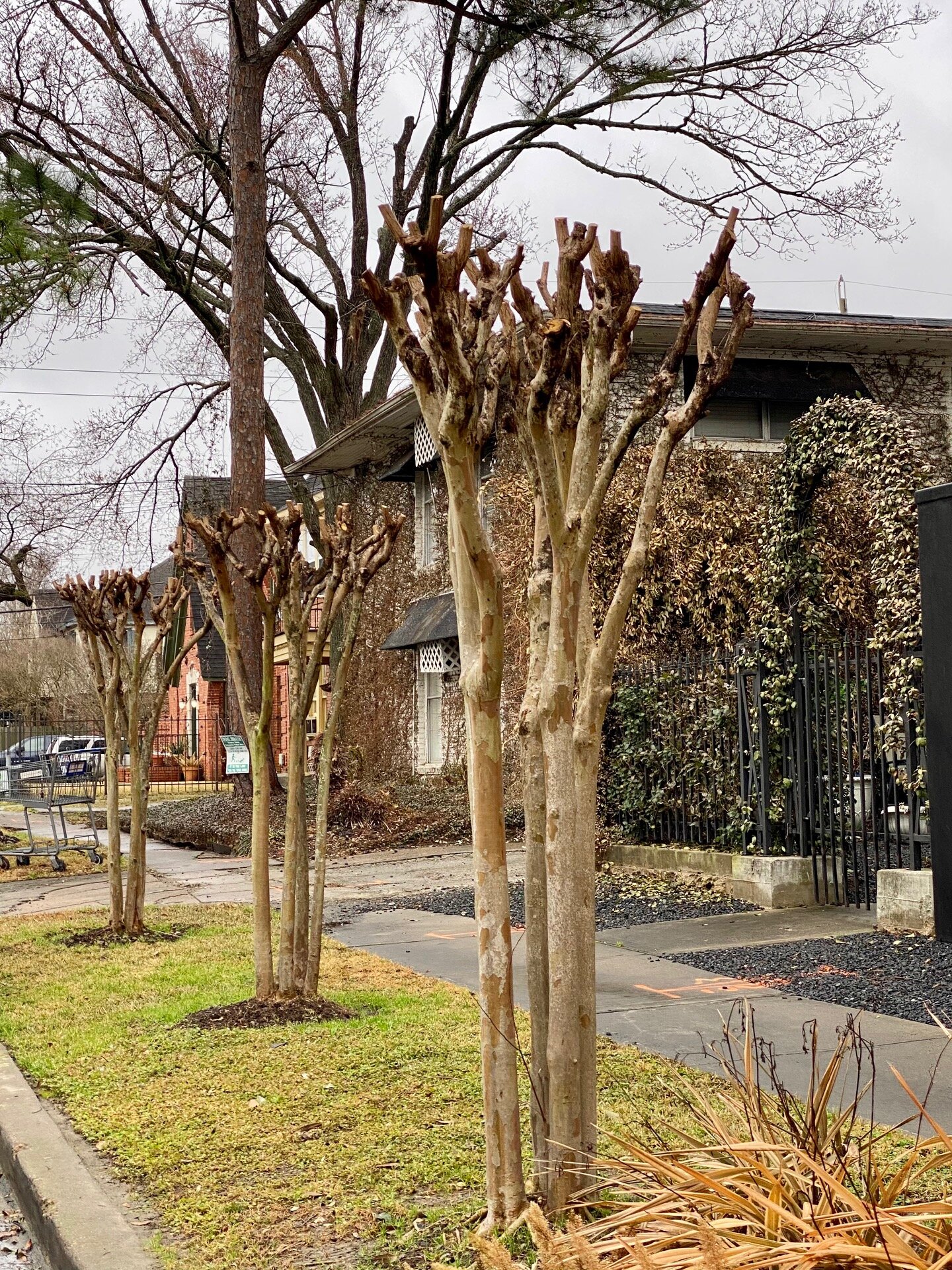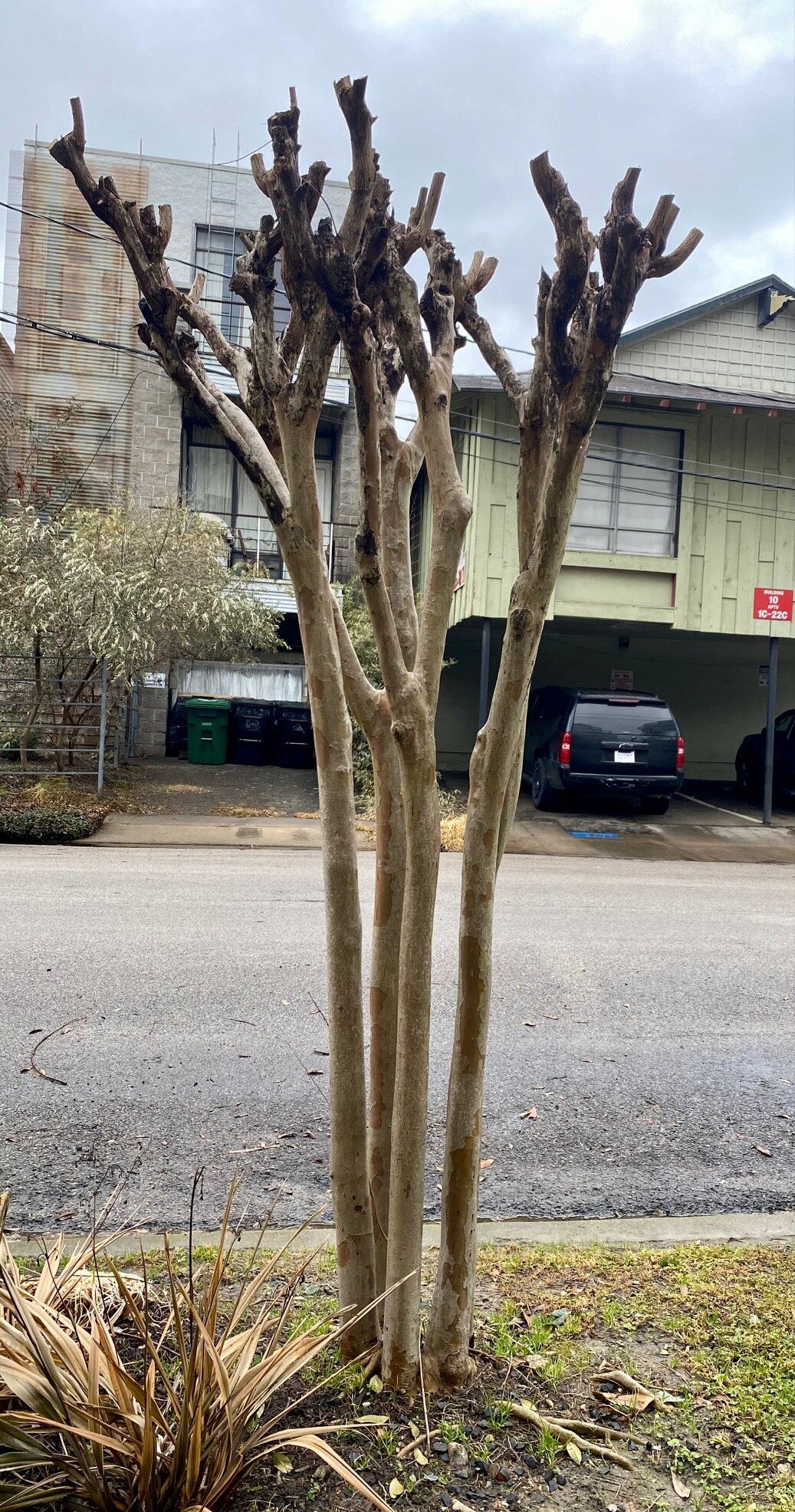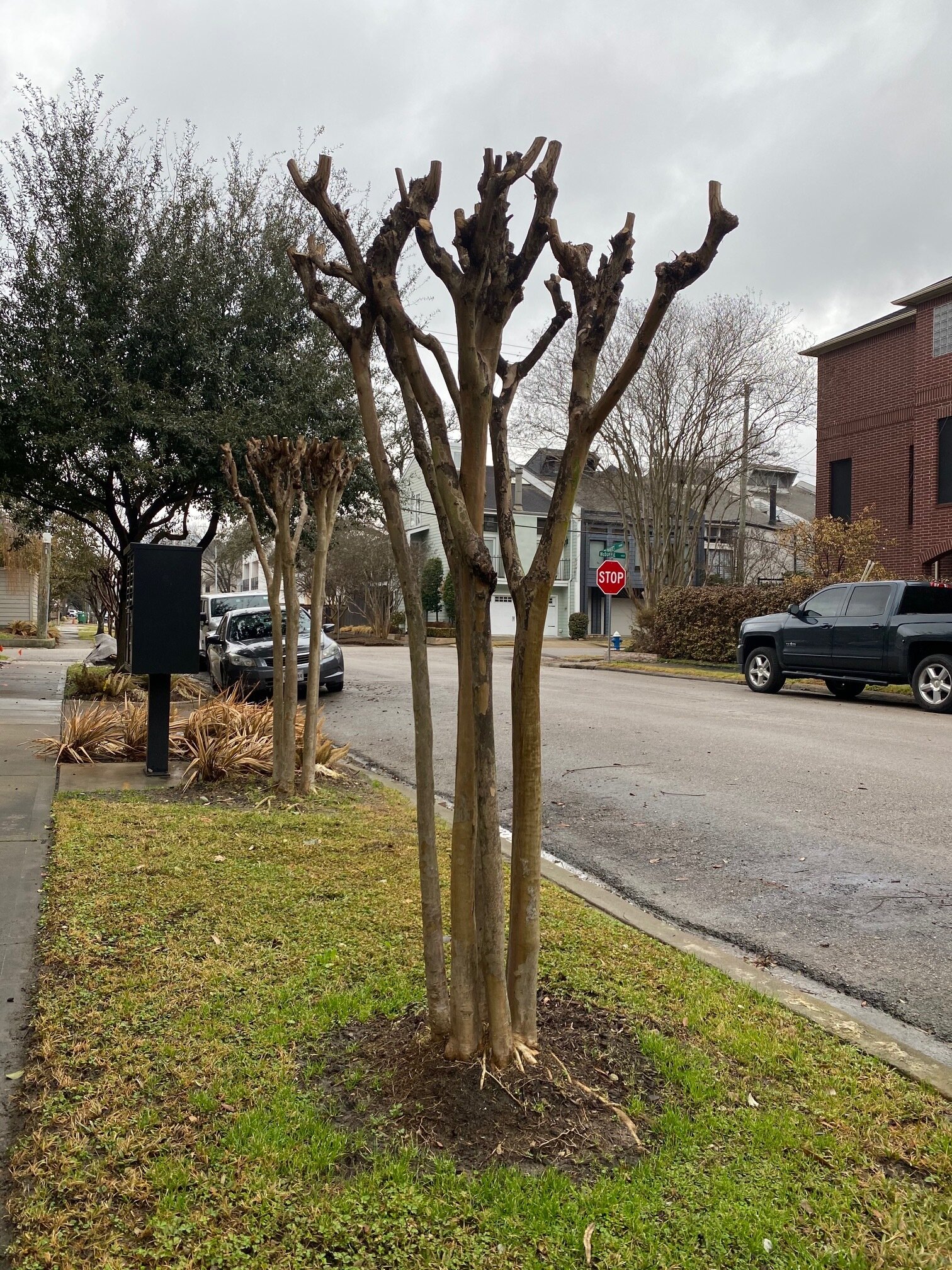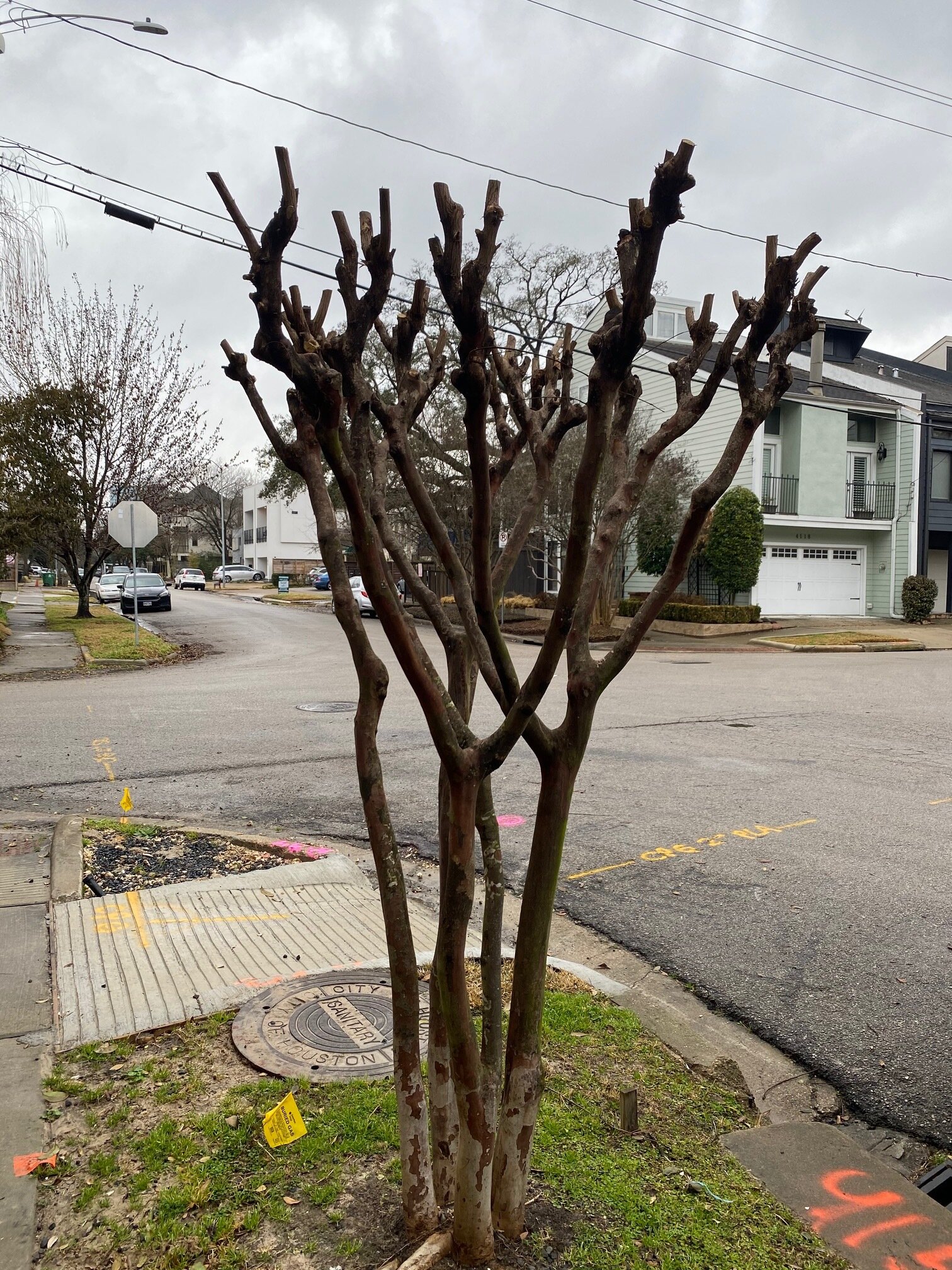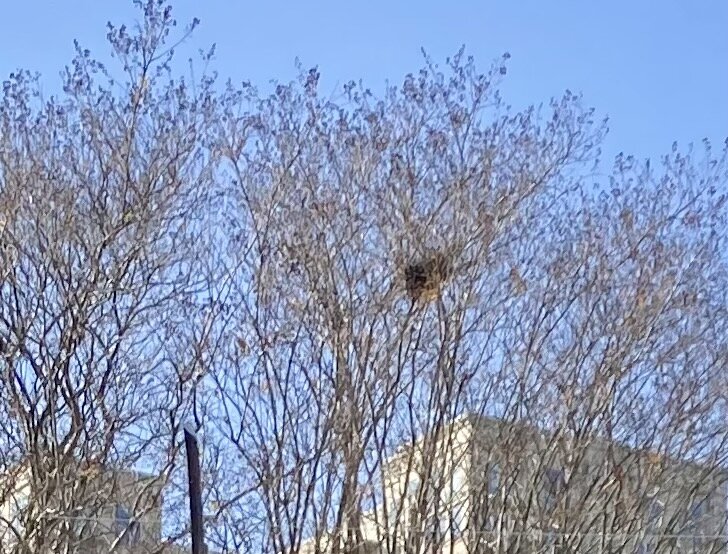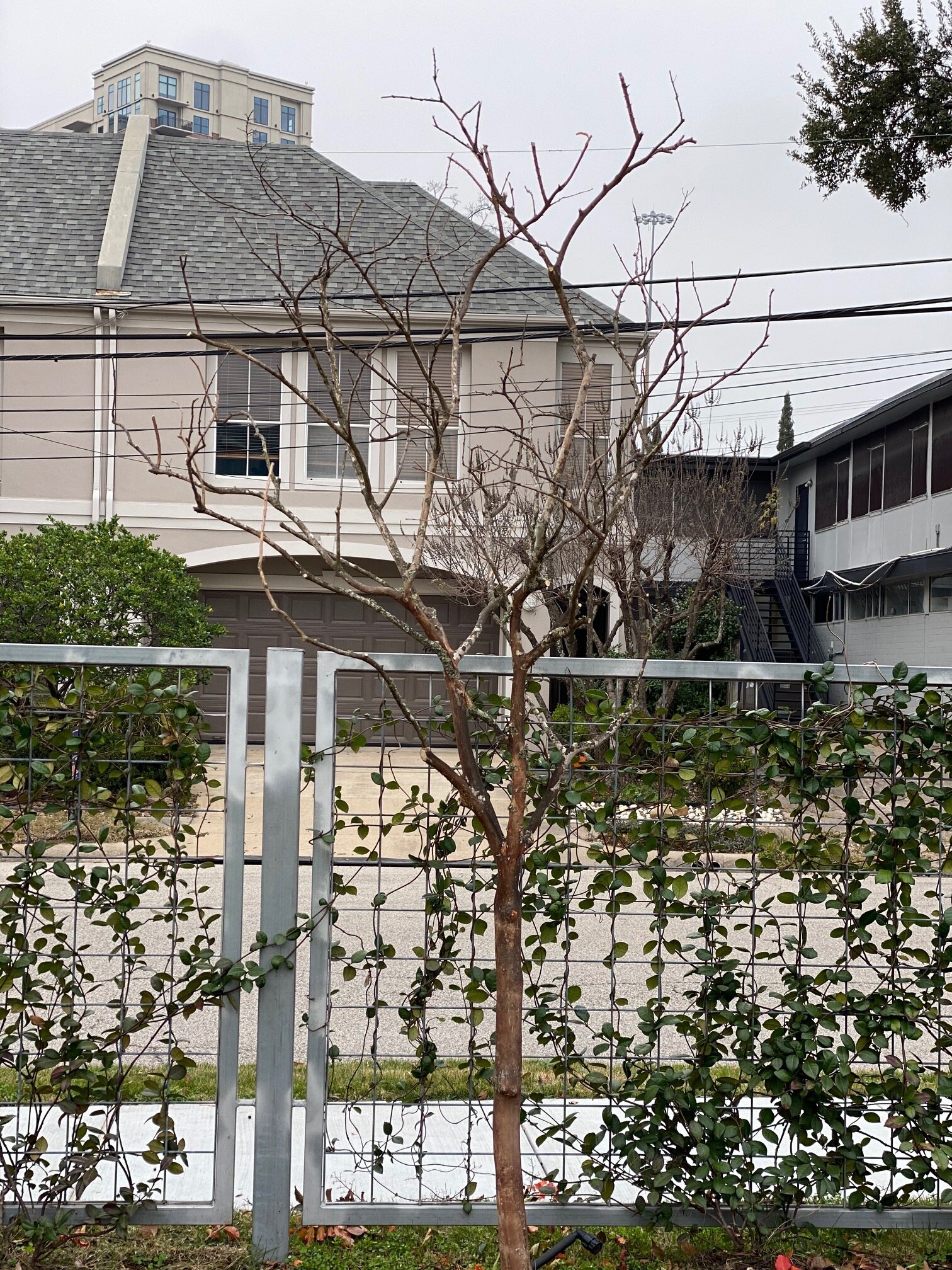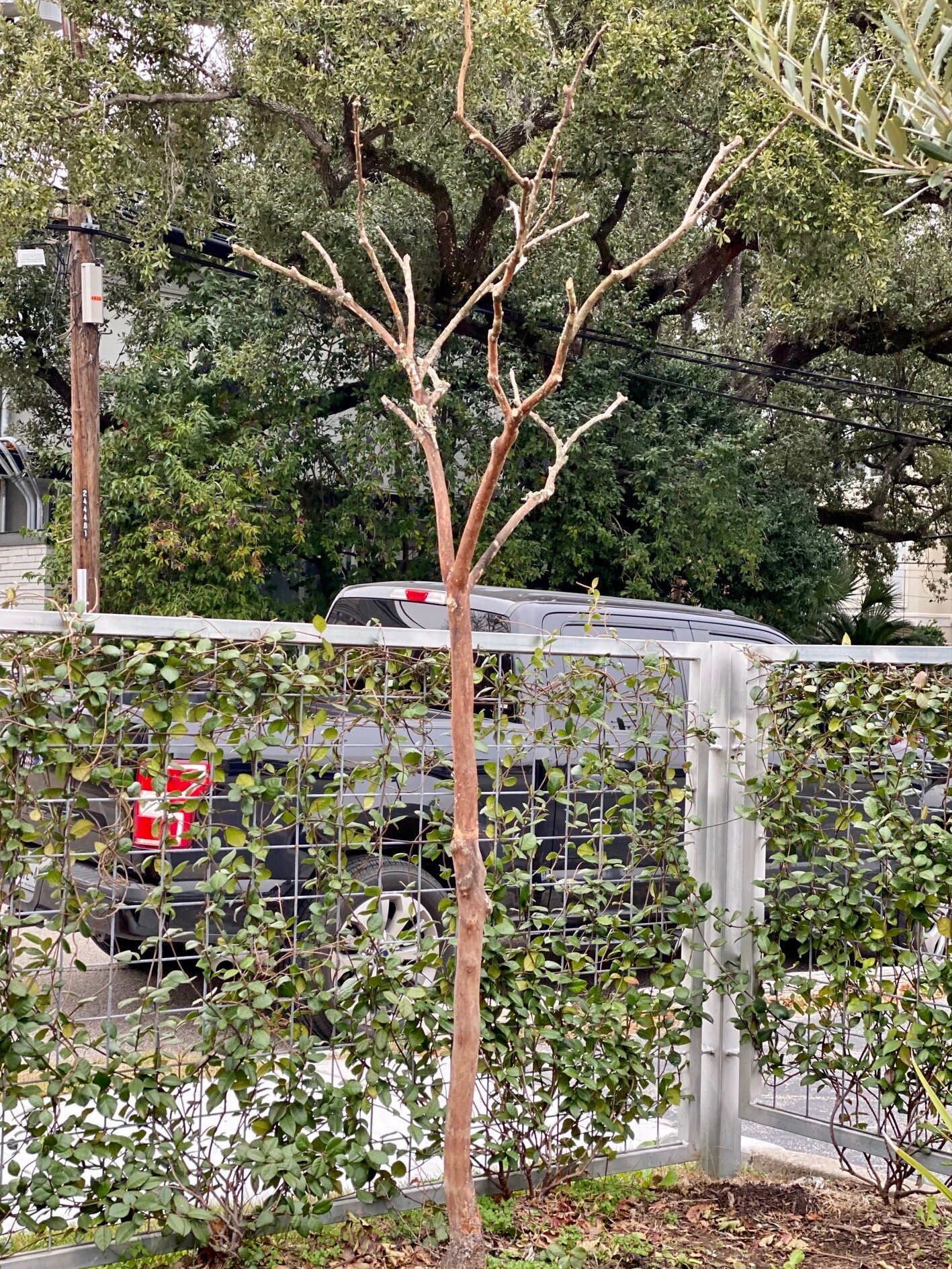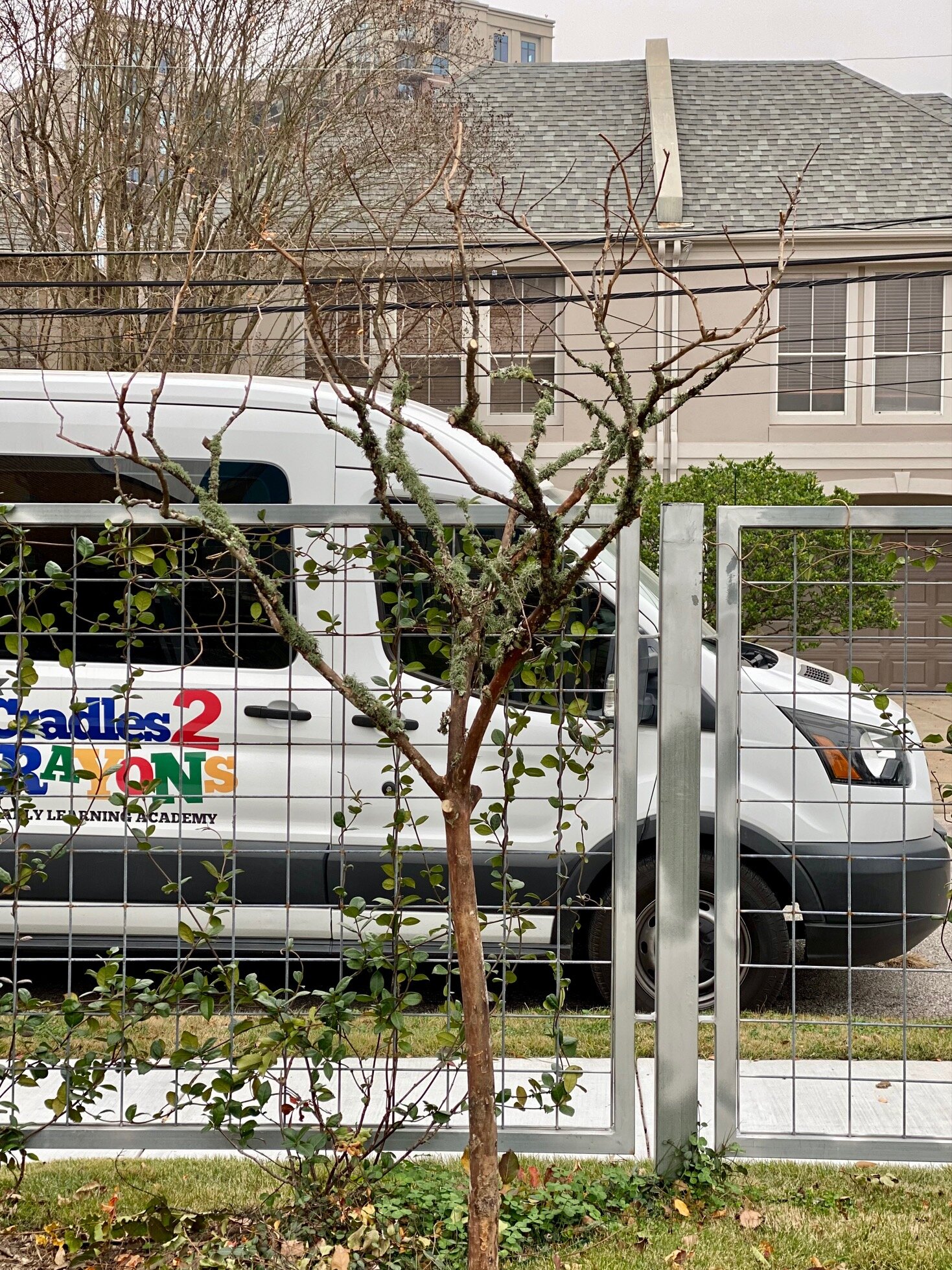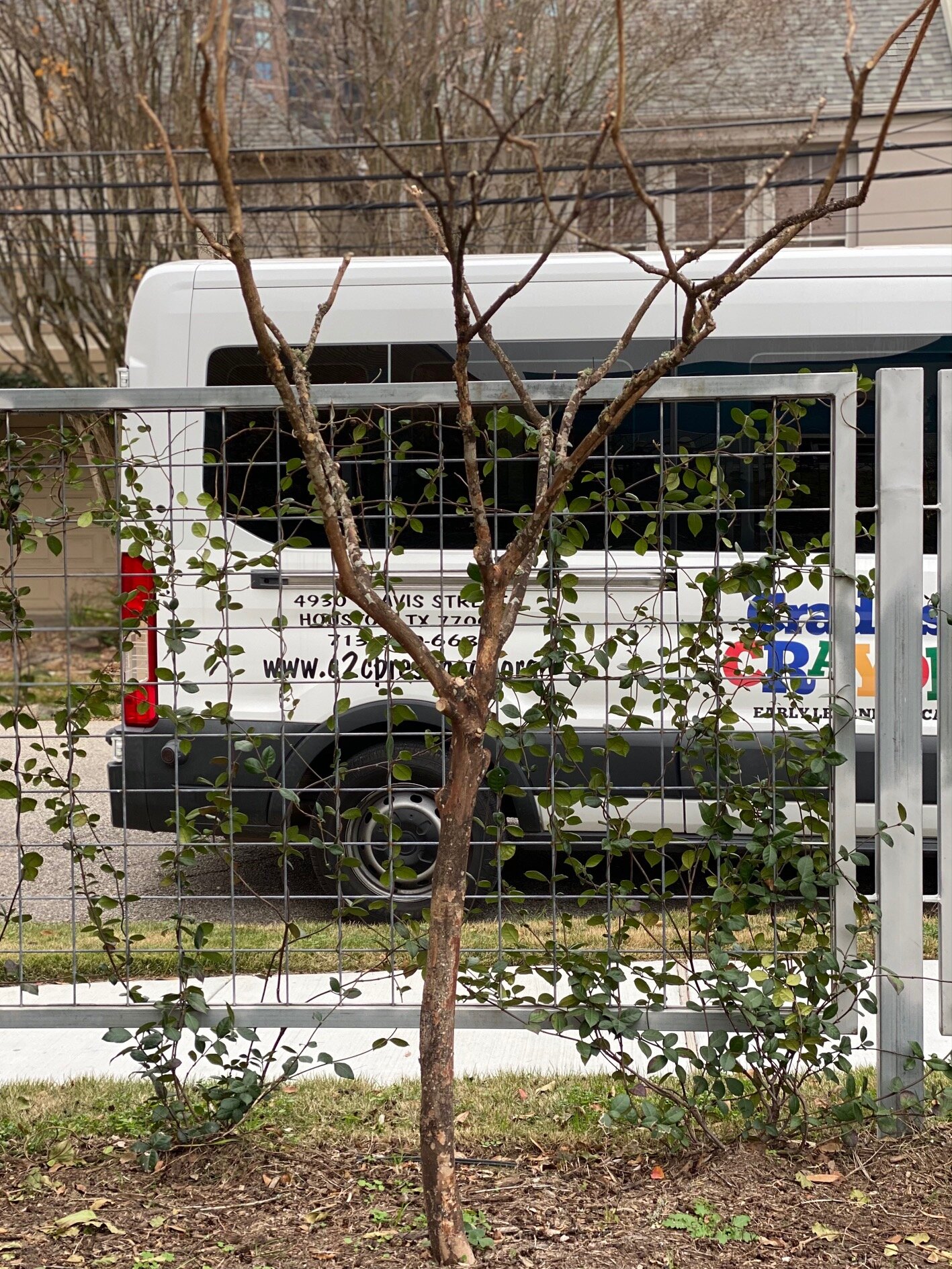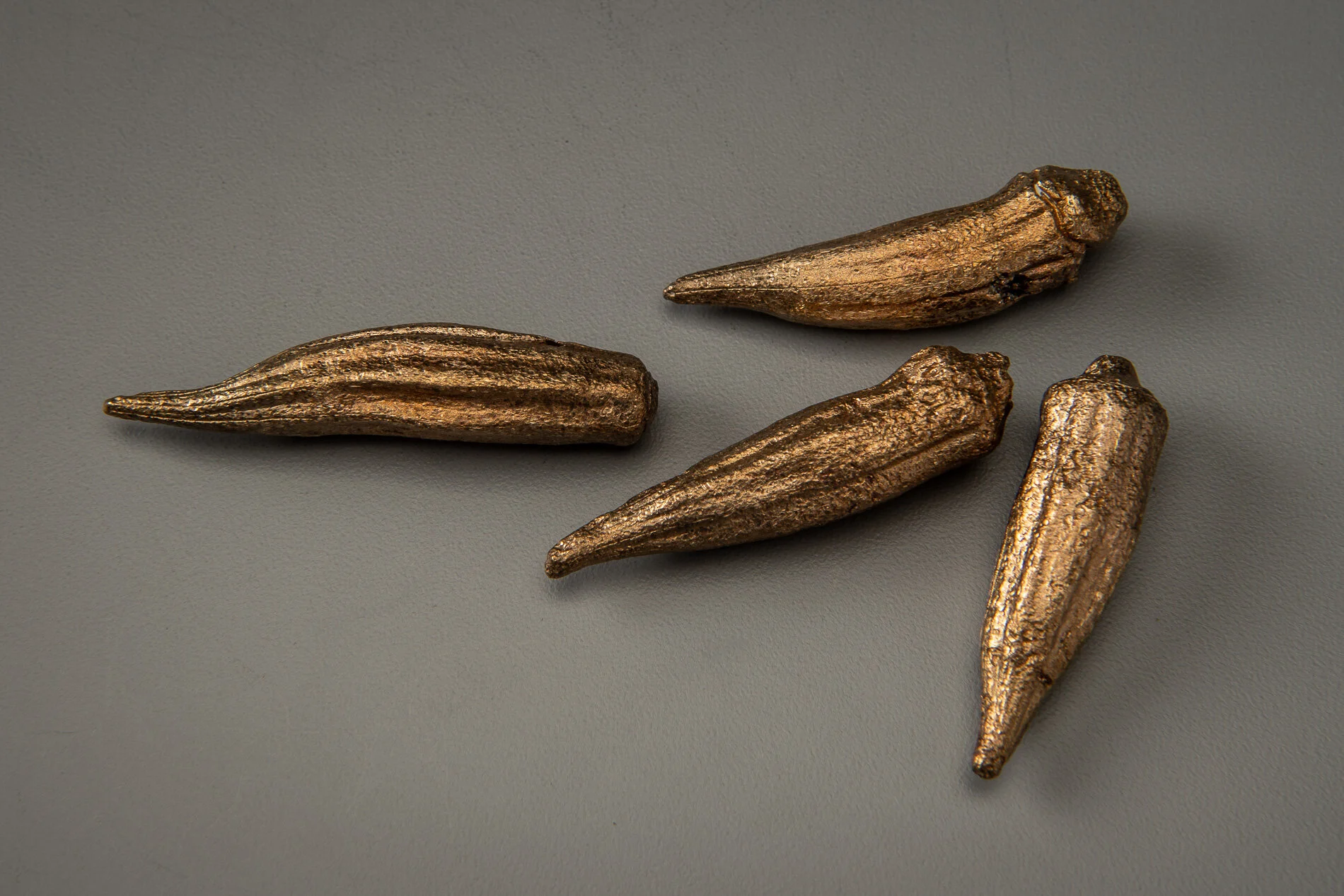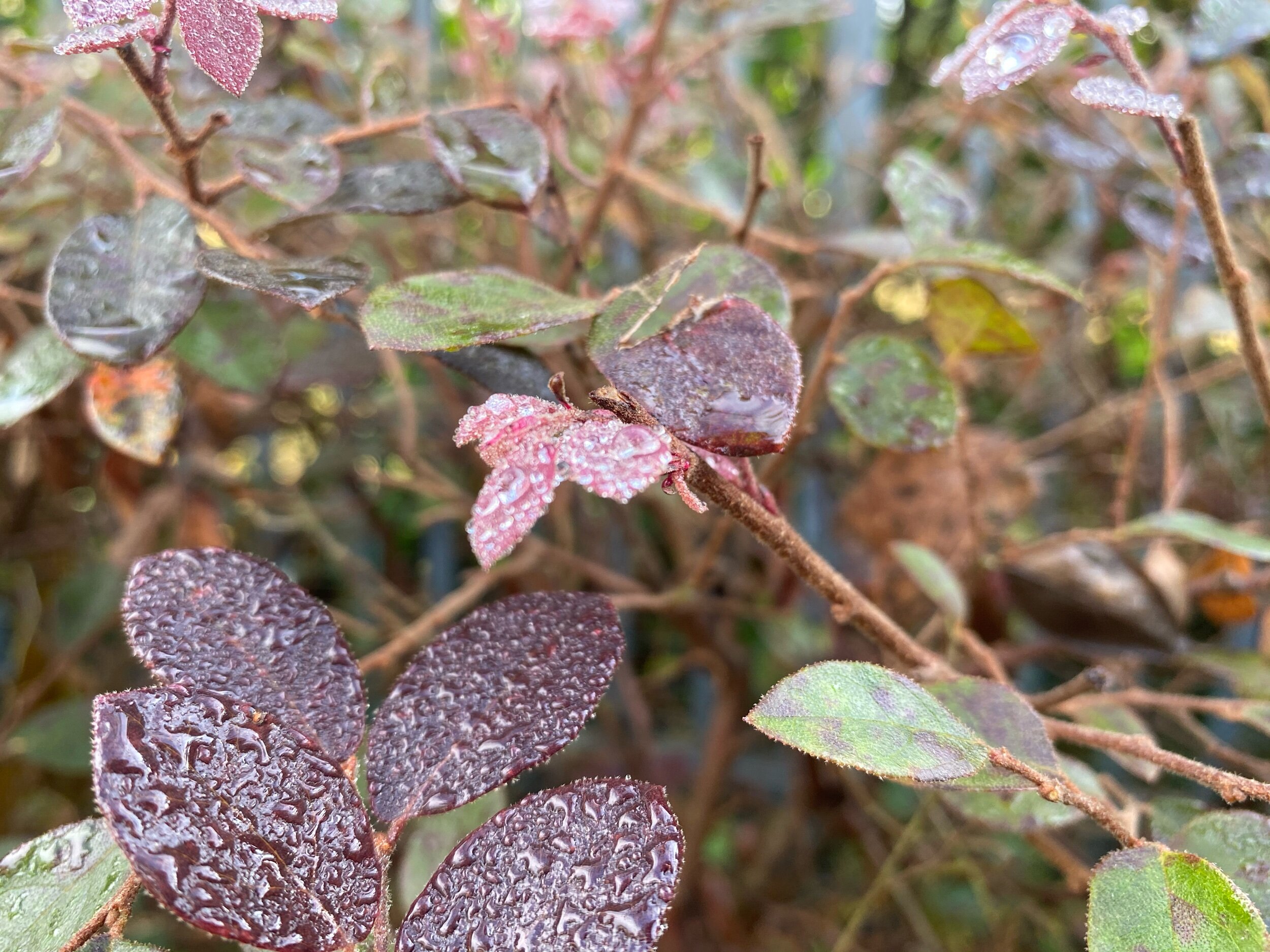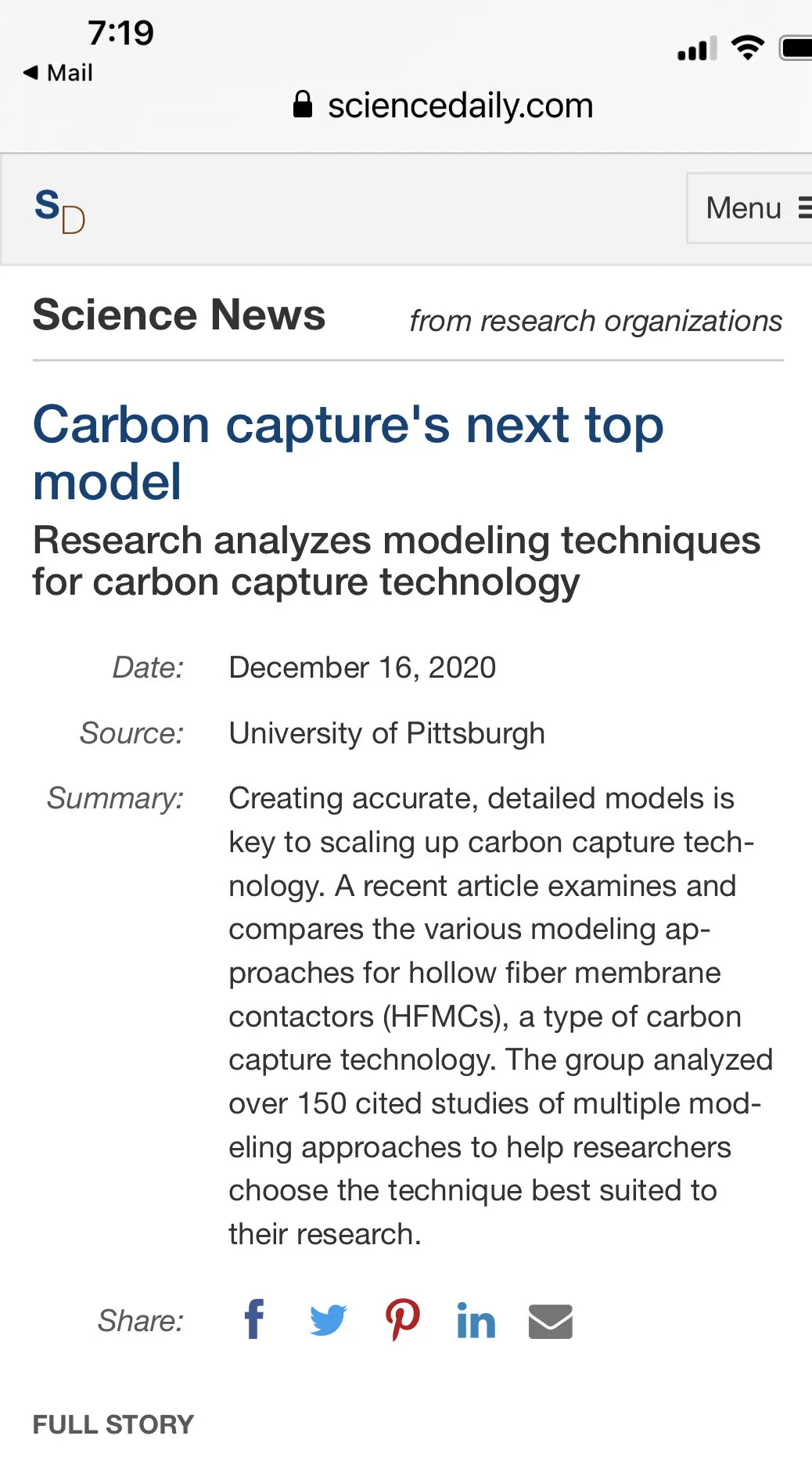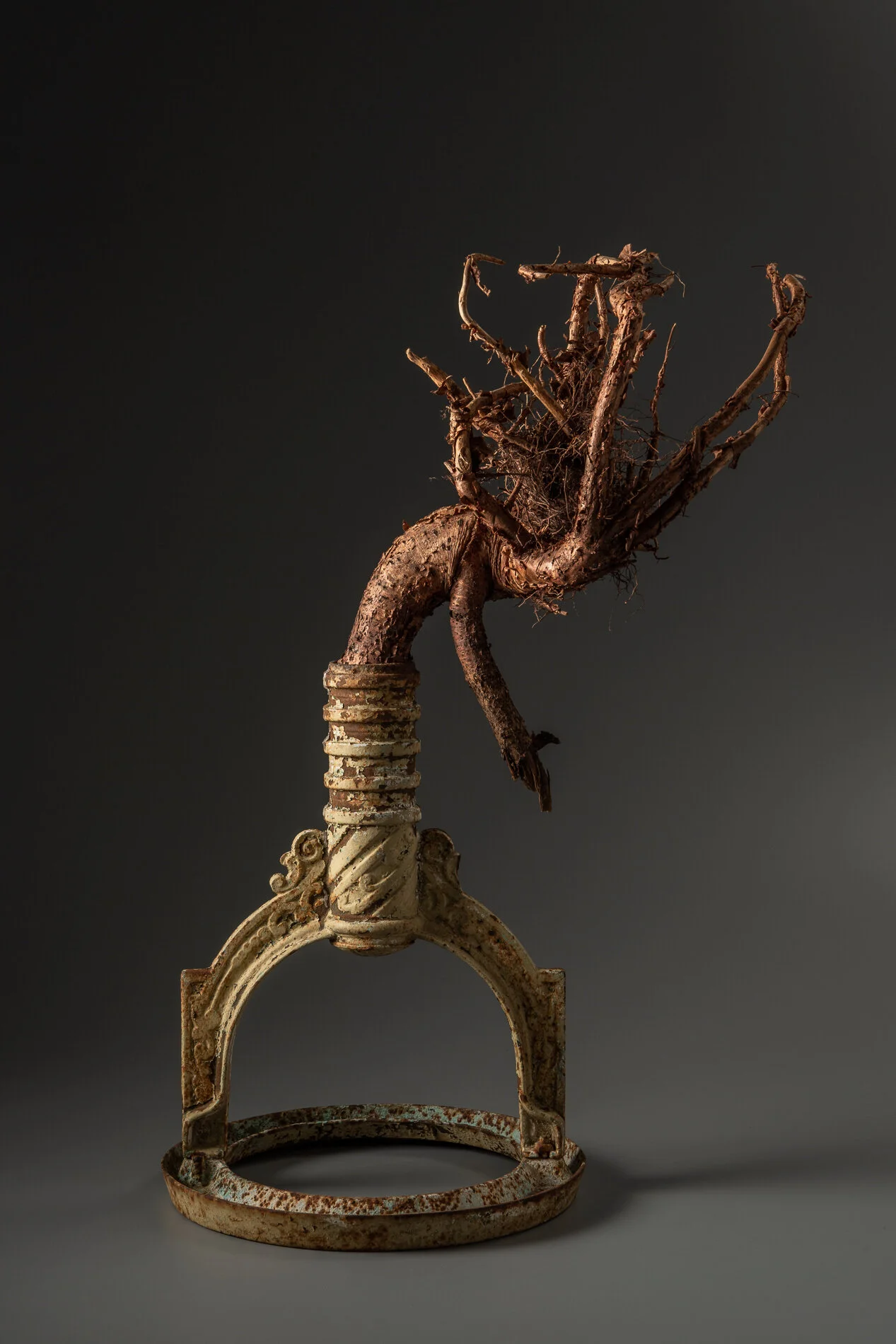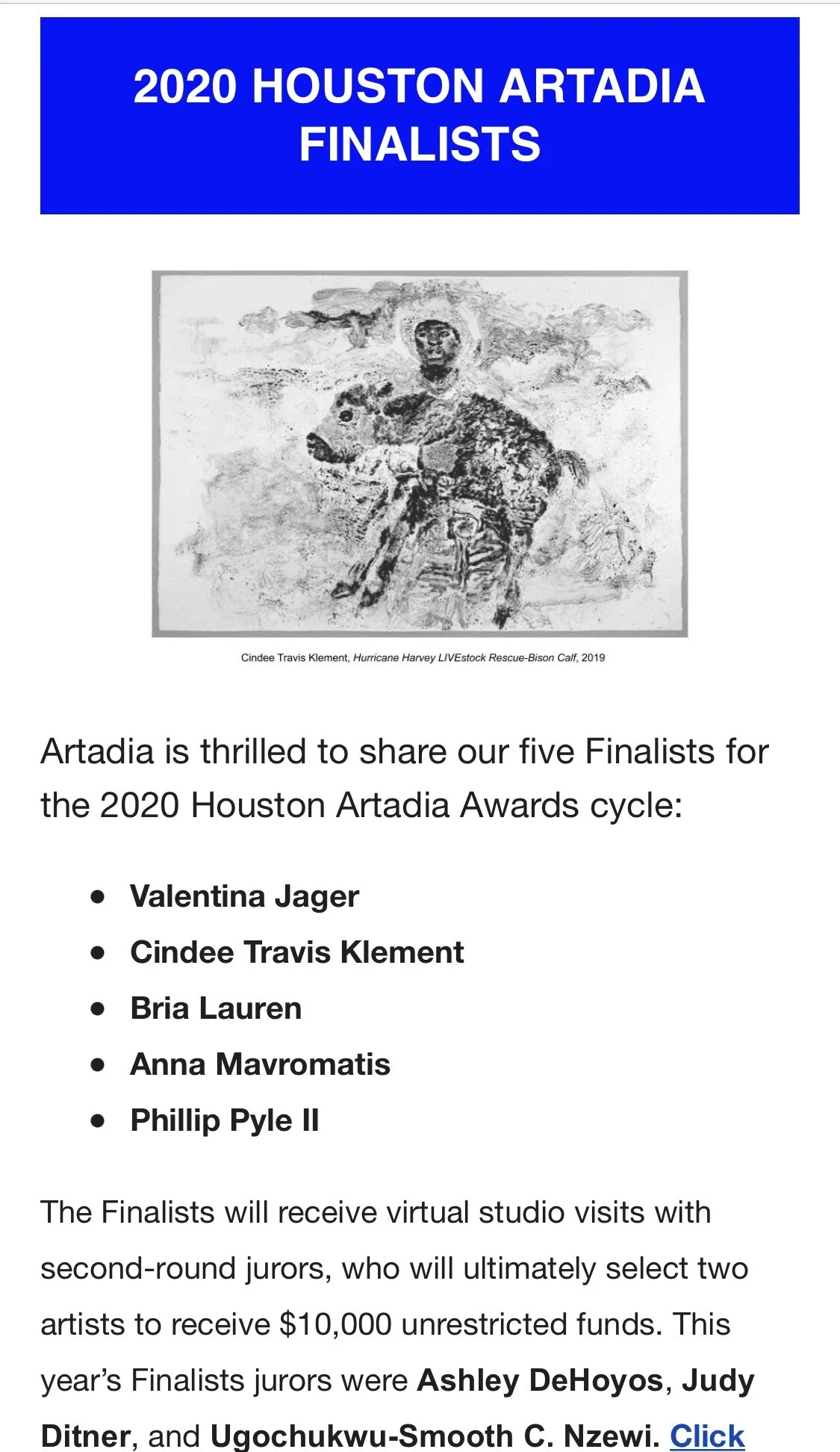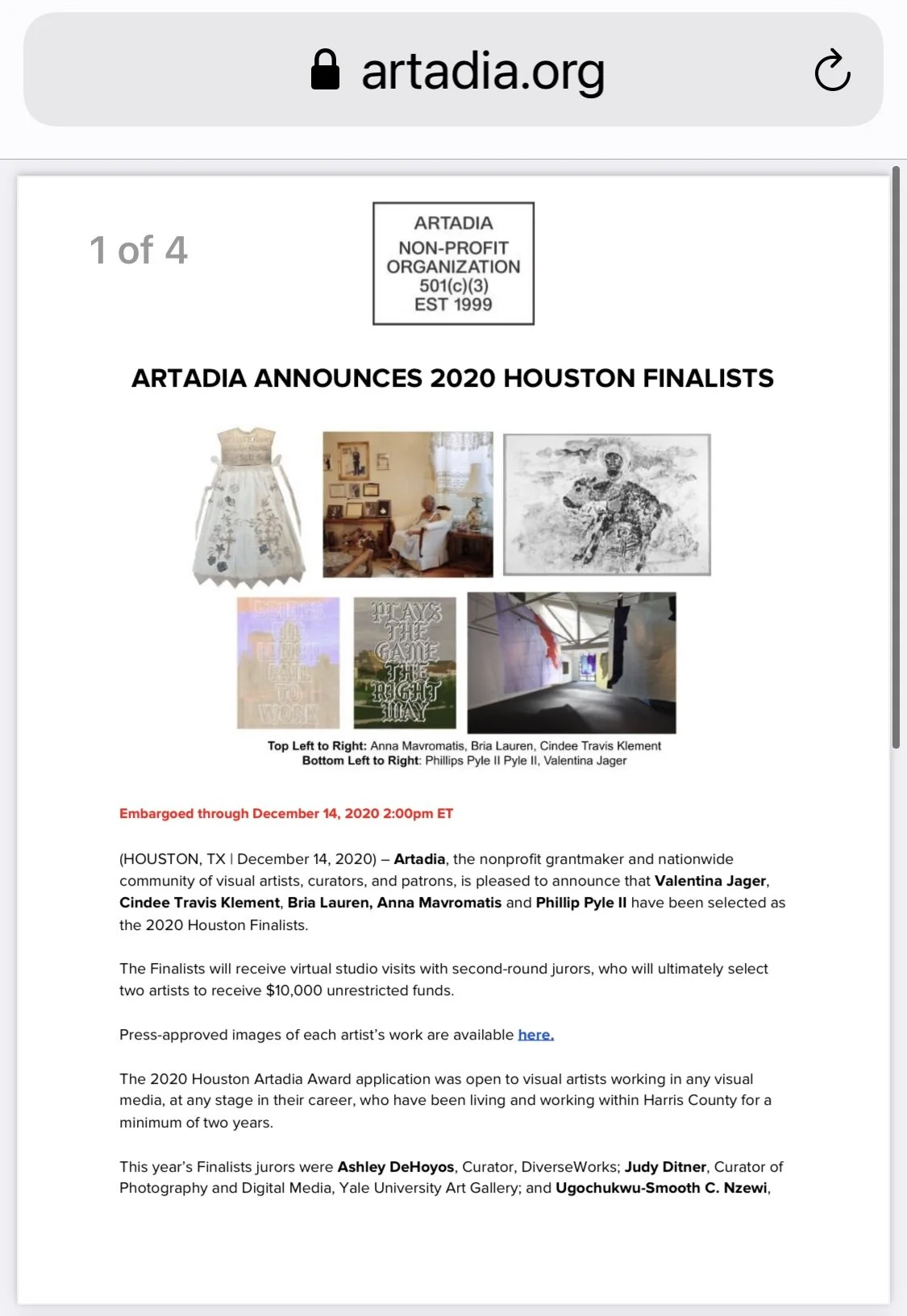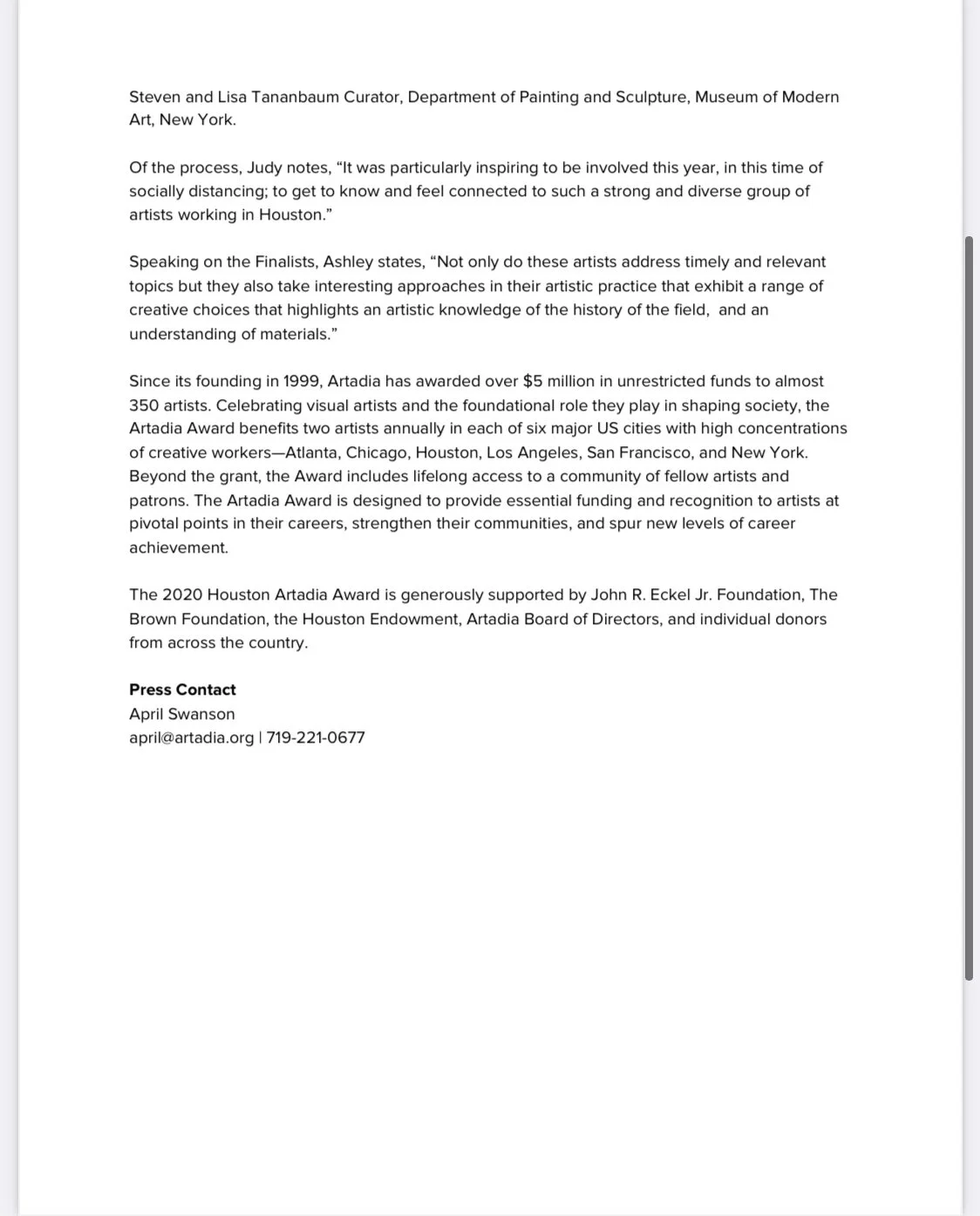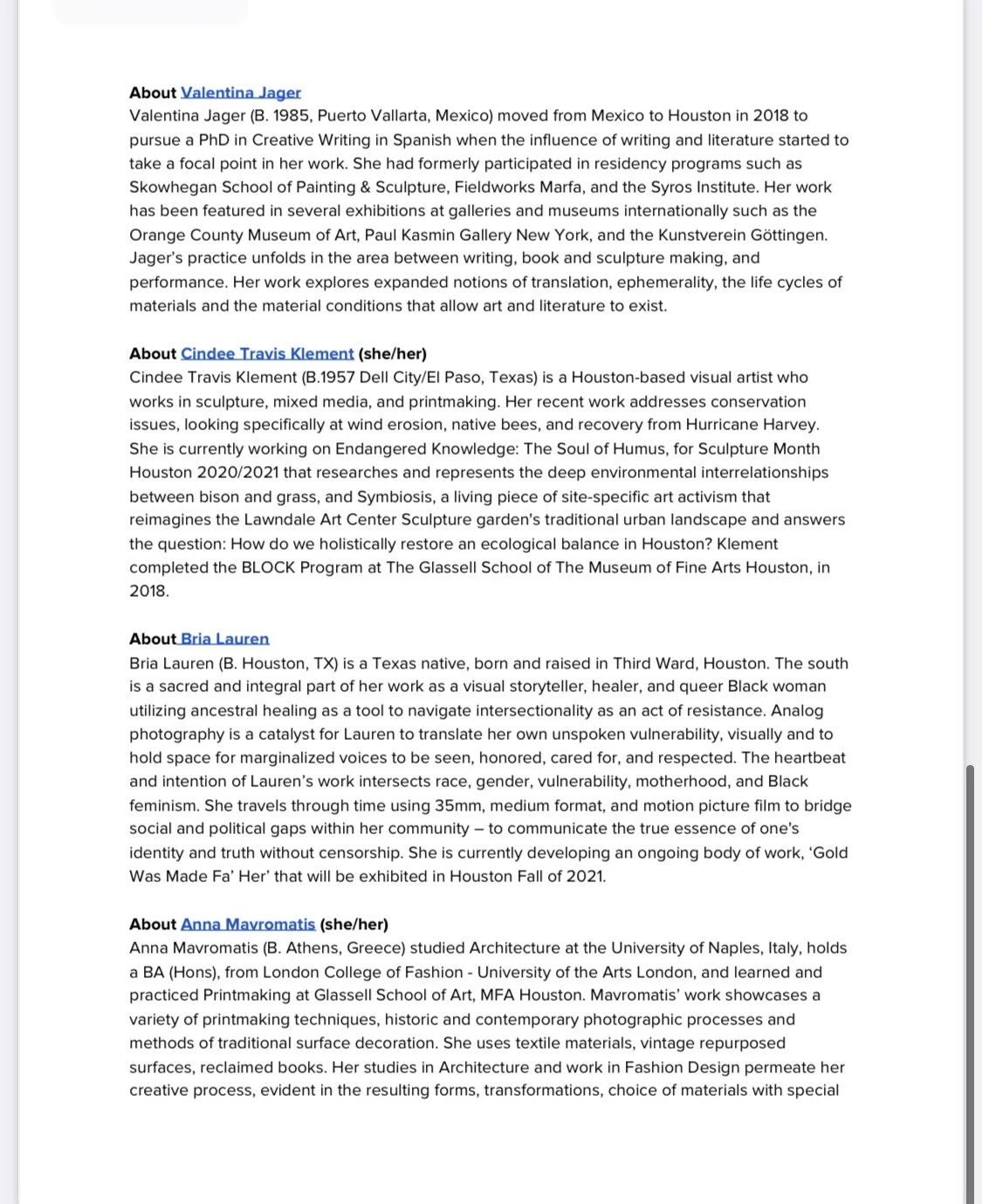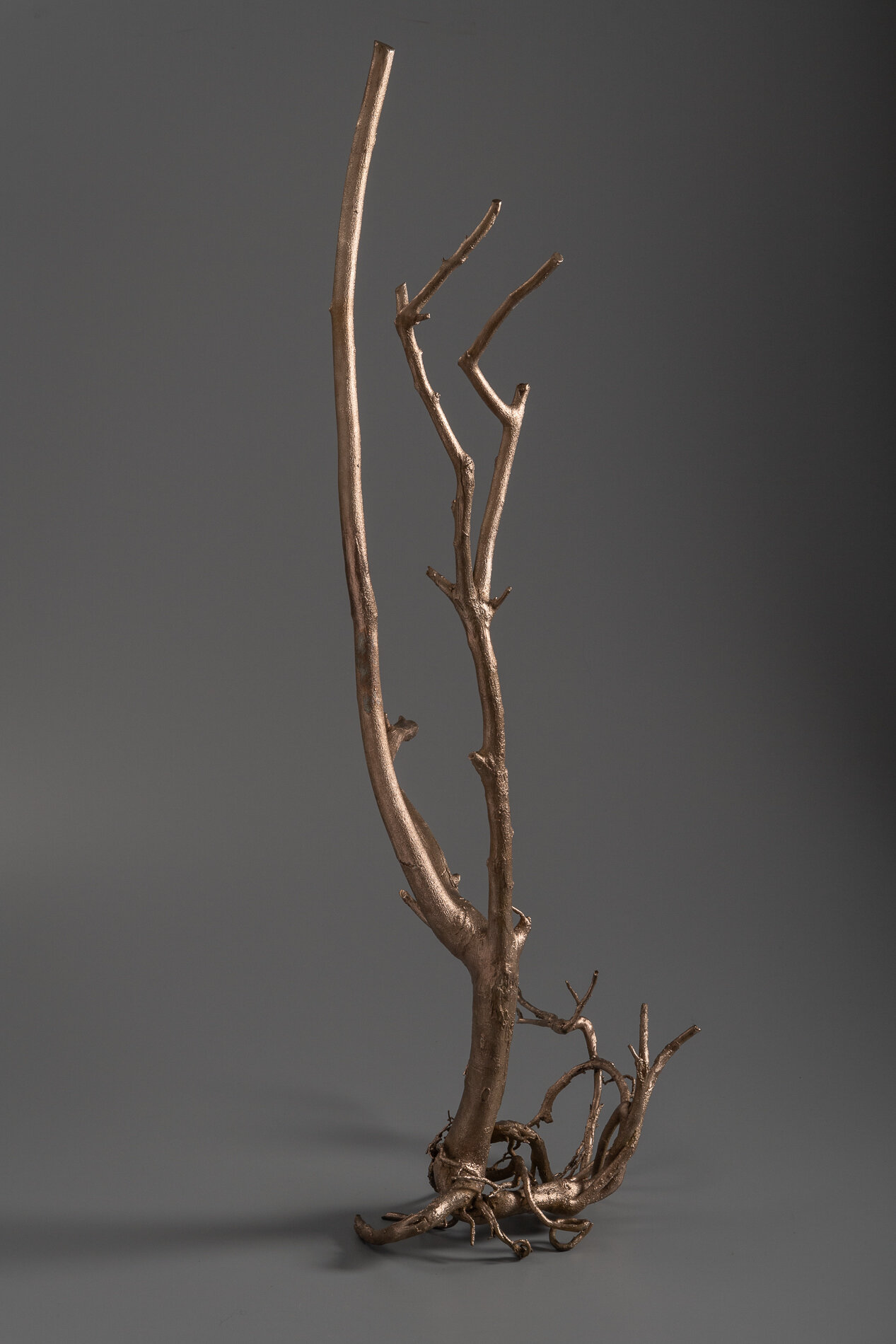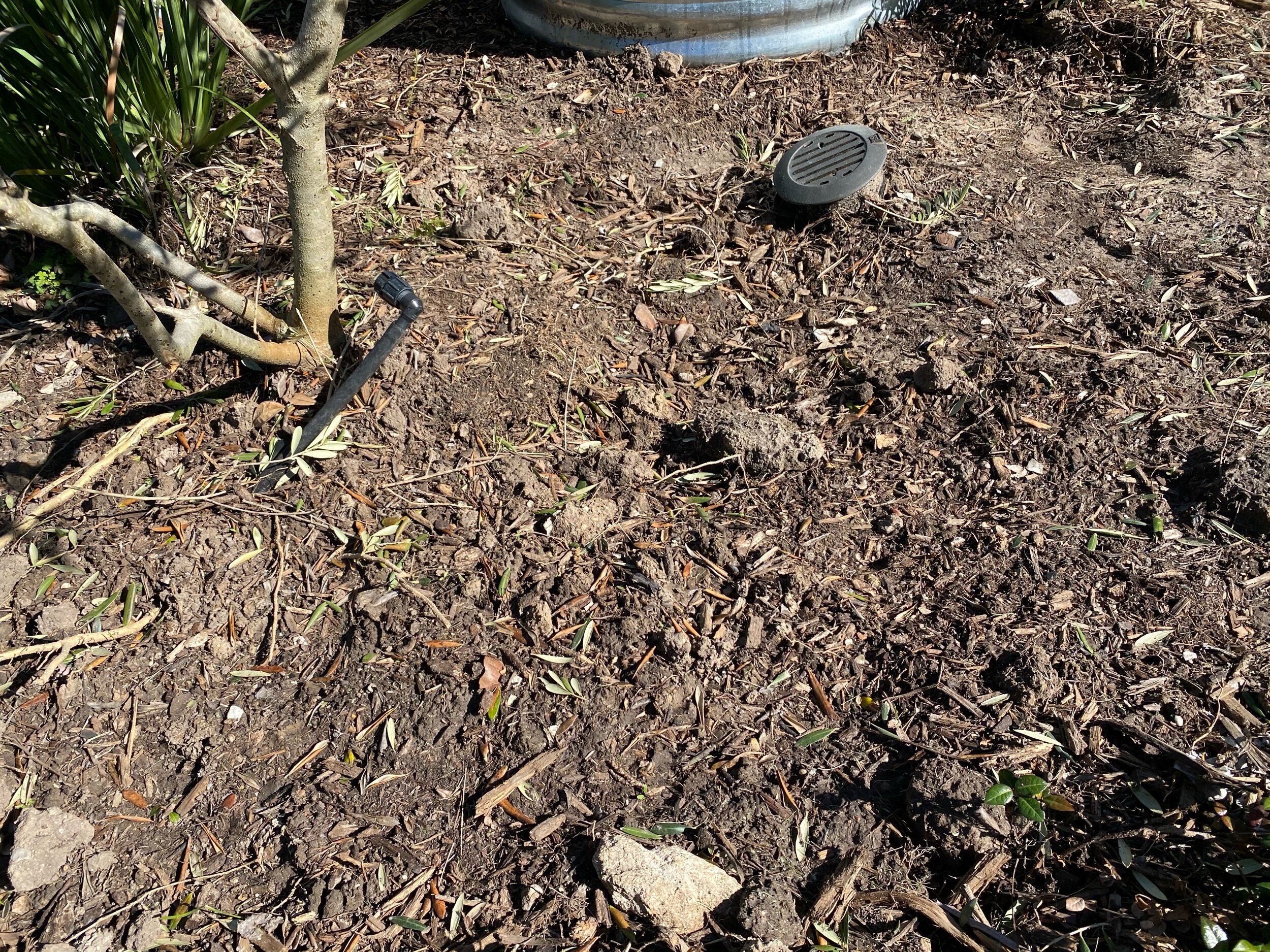3. Lagerstromia indica—Song
Through my research, I found that Lagerstromia indica is not a Texas native species, but they do support urban wildlife. They provide nourishment for the American Goldfinches and House Finch There is hope that they will support the Coastal Prairie pollinators— some varieties are reported to support Bumble bees in Florida.
In my holistic view, as an artist of living soil, caretaker of urban wildlife, and propagator of goodwill in an art community—the cinnamon bark-free skin of the trunks of these Lagestromia indica give rise to the culture of gratitude for the gifts that are the lifeblood of the institution. Their blossoms paint the grey clouds with an appreciation for their generous donation, their limbs serve as dining rooms for winter feasts seated with our feathered friends, and their leaves shade the walkway of our neighbors.
My cuts will build the armature that will allow this gift to unfold into a backdrop of texture and seasonal color for exhibitions in the garden, blocking the visual noise of powerlines and parked cars on Travis Street, enhancing the photographic documentation in the space that art institutions require.
My marks will invite the fellow Finches' flight song to seasonally punctuate the murmur of white noise hummed by Main street The knots and knees of my carvings will serve as stages for the flutter between warbling-jumbled short notes that stir from the beaks as the feathered gentlemen court the fertile finches with seed.
When Crepe Myrtle’s blossoms fade they form seed heads in the shape of green berries. Over time the berries turn brown and crack open. Inside the six pronged pods are the seeds that feed the Golden Finches.
The elbows and joints of my work will be the pier and beam to their nests. They will shelter the new parents as they warm and protect their light blue and brown speckled eggs from predatory creatures. From their limbs will hatch the future soloists of the garden. I can hear them now. The Crepe Myrtles are a gift that balances the humanities and, in time, will embrace the wild. They are gift — gratitude — song.

